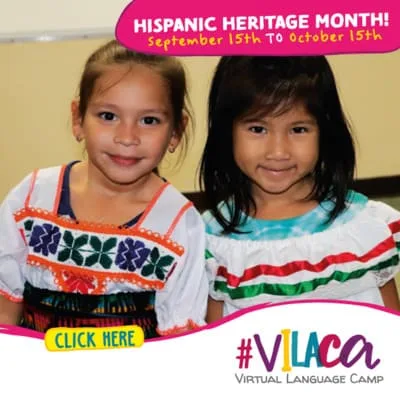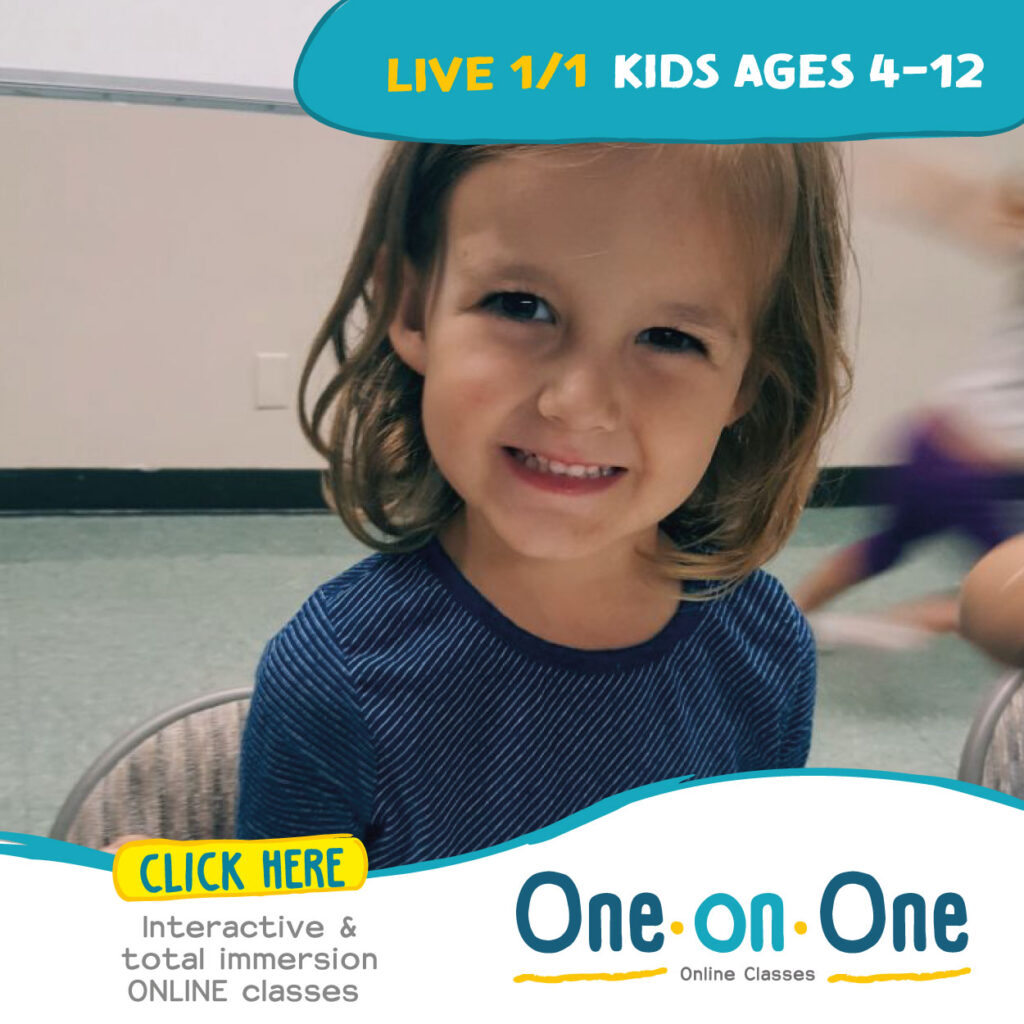Did you know that there are approximately 93,000 words in Spanish? That number sounds overwhelming, but don’t panic. It is estimated that only 10,000 to 15,000 of those words are used on a regular basis by fluent speakers. And out of those words, only around 1,500 words or more, qualify for a pre-intermediate level, meaning that a speaker can hold basic conversations. With so many words to choose from, which Spanish words and phrases should you teach to your child first? We’ve picked out the essentials for basic communication and put them into categories below.
*Read to the end of the article to learn why only teaching lists of words is not an effective way to teach a language.
| Core Vocabulary: Yes – Sí No – No Sorry – Lo siento Help – Ayuda Mine – Mío All done – Todo listo | Family: Mother – Madre Father – Padre Sister – Hermana Brother – Hermano | Greetings and Politeness: Hello – Hola Goodbye – Adios Please – Por favor Thank you – Gracias |
| Basic Verbs: Be – Estar/Ser Eat – Comer Drink – Beber Sleep – Dormir Play – Jugar Run – Correr Talk – Hablar Listen – Escuchar Look – Mirar Go – Ir | Basic Adjectives: Big – Grande Small – pequeño/a Hot – Caliente Cold – Frio/a | Basic Nouns: Food items (e.g., milk, apple, banana) Common objects (e.g., ball, toy, book) Body parts (e.g., nose, eyes, hands) |
| Questions and Interrogatives: What’s that? – ¿Qué es eso? Where? – ¿Dónde? Who? – ¿Quién? What? – ¿Qué? Why? – ¿Por qué? How? – ¿Cómo? | Feelings and Emotions: Happy – Feliz Sad – Triste Angry – Enojado/a Scared – Asustado | Daily Routine Phrases: Good morning – Buen día. Goodnight – Buenas noches. I love you – Te amo. It’s time to… – Es tiempo de… Bath time – Hora del baño. Bedtime – Hora de acostarse. |
While these words are widely used and critical for basic communication, they cannot be learned in isolation. The brain learns a new language by making connections of how words relate to each other in sentences and how sentences relate to each other in paragraphs and those paragraphs communicate an idea. The best way to learn Spanish is immersion, which means surrounding a child in Spanish with how it is spoken naturally and fluently by a native speaker. The best Spanish immersion program we know of is ViLaCa (Virtual Language Camp). During this online language camp aimed towards children K-5, native speakers talk to children in only Spanish about more than 300 “cultural topics” where most, if not all, of the above words and phrases will be used in real sentences. Click Here to learn more about the program and sign up today.







